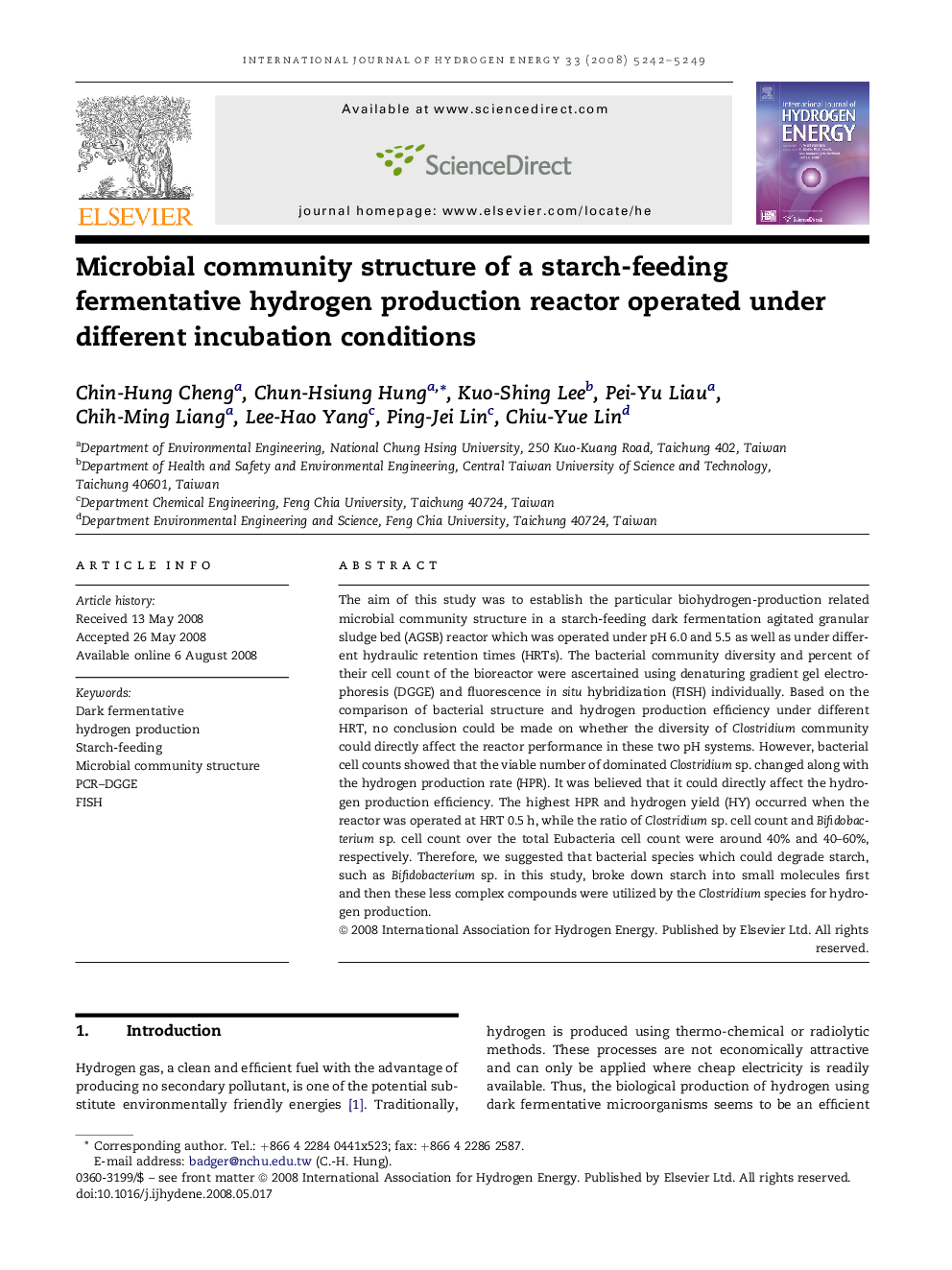| Article ID | Journal | Published Year | Pages | File Type |
|---|---|---|---|---|
| 1281441 | International Journal of Hydrogen Energy | 2008 | 8 Pages |
The aim of this study was to establish the particular biohydrogen-production related microbial community structure in a starch-feeding dark fermentation agitated granular sludge bed (AGSB) reactor which was operated under pH 6.0 and 5.5 as well as under different hydraulic retention times (HRTs). The bacterial community diversity and percent of their cell count of the bioreactor were ascertained using denaturing gradient gel electrophoresis (DGGE) and fluorescence in situ hybridization (FISH) individually. Based on the comparison of bacterial structure and hydrogen production efficiency under different HRT, no conclusion could be made on whether the diversity of Clostridium community could directly affect the reactor performance in these two pH systems. However, bacterial cell counts showed that the viable number of dominated Clostridium sp. changed along with the hydrogen production rate (HPR). It was believed that it could directly affect the hydrogen production efficiency. The highest HPR and hydrogen yield (HY) occurred when the reactor was operated at HRT 0.5 h, while the ratio of Clostridium sp. cell count and Bifidobacterium sp. cell count over the total Eubacteria cell count were around 40% and 40–60%, respectively. Therefore, we suggested that bacterial species which could degrade starch, such as Bifidobacterium sp. in this study, broke down starch into small molecules first and then these less complex compounds were utilized by the Clostridium species for hydrogen production.
